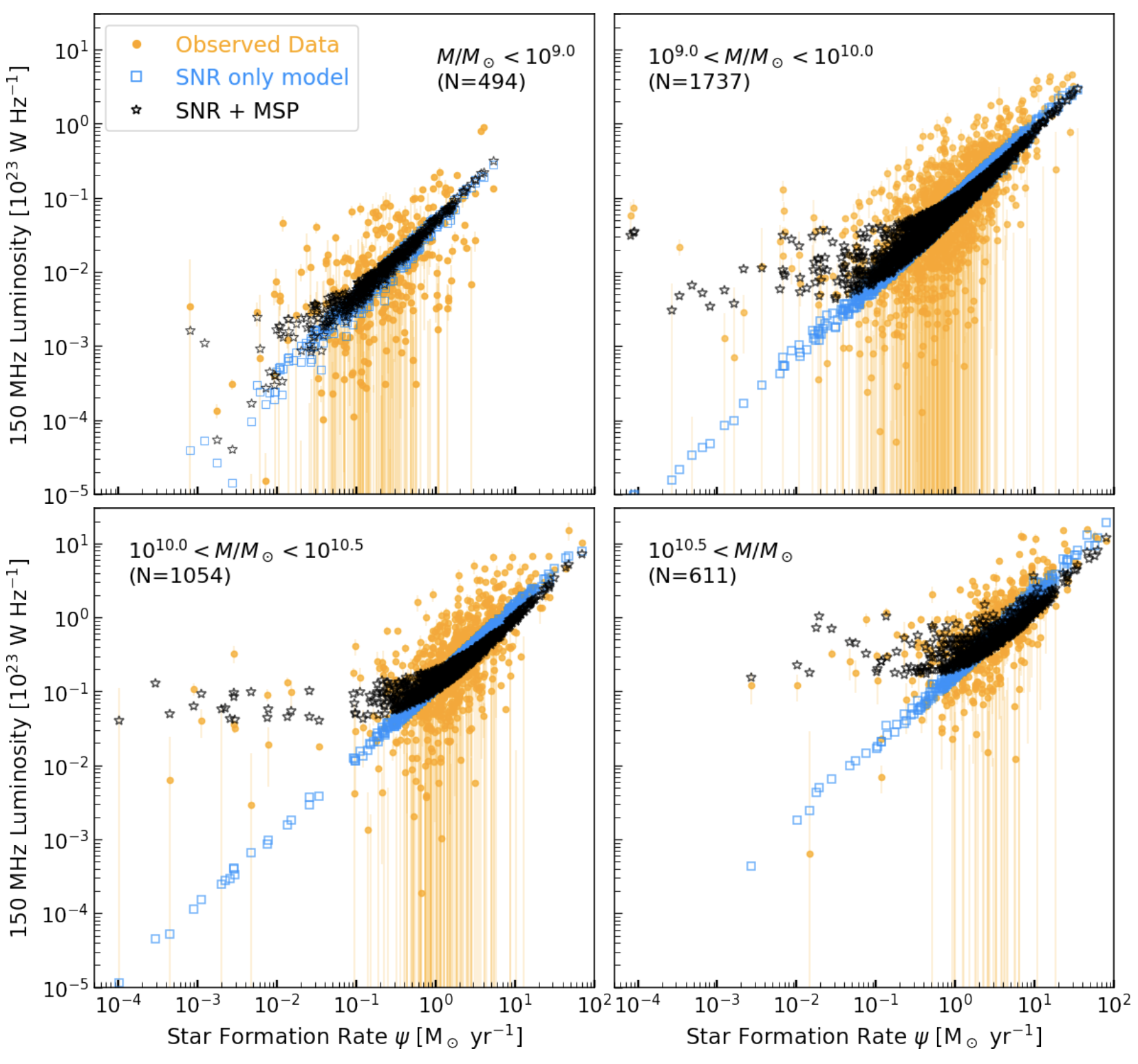
MSPs and the Radio/FIR Correlation
Observations over several decades have established a strong correlation between the far-infrared and non-thermal radio luminosities of star-forming galaxies. Because far-IR emission is produced primarily by massive stars, and non-thermal radio emission primarily by cosmic-ray electrons, this relationship is interpreted as observational evidence for the production of high-energy cosmic-rays by recent star-formation events. Intriguingly, this relation continues over more than four magnitudes in star-formation rate. Recent LOFAR observations, however, find an intriguing radio excess among galaxies with high stellar masses and low-star formation rates -- a result which apperas at odd with star-formation models of the cosmic-ray population. We propose that millisecond pulsars -- which evolve over Gyr timescales and thus trace historic star-formation, can contribute to, or even dominate, the radio flux from these dead galaxies. Such an observation has important implications for our understanding of stellar evolution, as well as cosmic-ray production within the bulge of the Milky Way and other nearby galaxies.
Read MoreResearch Topics
- Highlights and Overview
- Dark Matter(79)
- Galactic Center Excess(20)
- Celestial Body Searches(21)
- Gamma-Ray Searches(19)
- Multiwavelength(8)
- Cosmic-Rays Searches(12)
- Dark Matter Models(21)
- Axion Dark Matter(3)
- Astrophysics(77)
- TeV Halos(19)
- Gamma-Ray Astronomy(32)
- Cosmic-Ray Astronomy(14)
- Radio Astronomy(5)
- Neutrino Astronomy(6)
- Solar Physics(7)
- X-Ray Binaries(7)